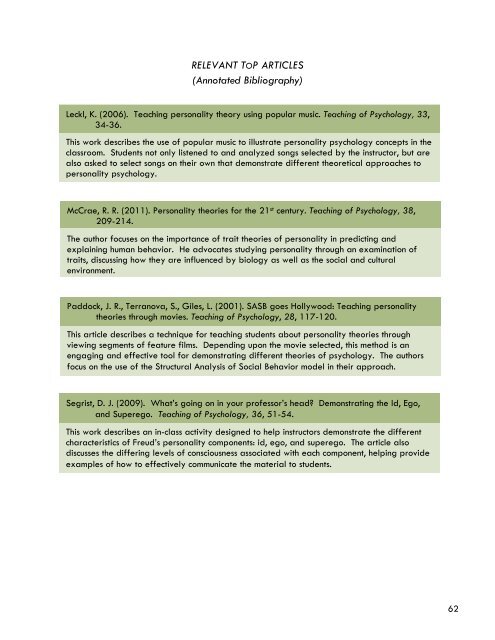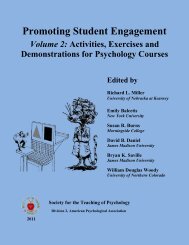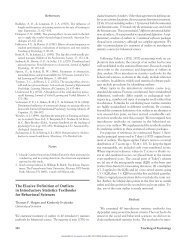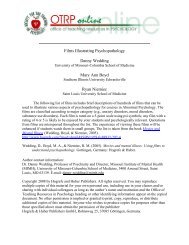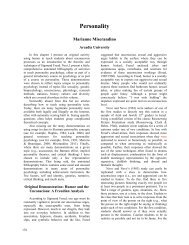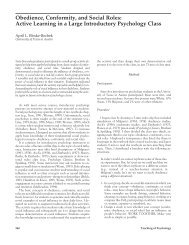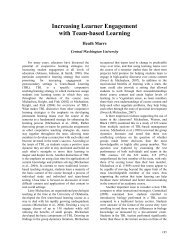INTRODUCTORY PSYCHOLOGY TEACHING PRIMER Early Career ...
INTRODUCTORY PSYCHOLOGY TEACHING PRIMER Early Career ...
INTRODUCTORY PSYCHOLOGY TEACHING PRIMER Early Career ...
Create successful ePaper yourself
Turn your PDF publications into a flip-book with our unique Google optimized e-Paper software.
RELEVANT TOP ARTICLES<br />
(Annotated Bibliography)<br />
Leckl, K. (2006). Teaching personality theory using popular music. Teaching of Psychology, 33,<br />
34-36.<br />
This work describes the use of popular music to illustrate personality psychology concepts in the<br />
classroom. Students not only listened to and analyzed songs selected by the instructor, but are<br />
also asked to select songs on their own that demonstrate different theoretical approaches to<br />
personality psychology.<br />
McCrae, R. R. (2011). Personality theories for the 21 st century. Teaching of Psychology, 38,<br />
209-214.<br />
The author focuses on the importance of trait theories of personality in predicting and<br />
explaining human behavior. He advocates studying personality through an examination of<br />
traits, discussing how they are influenced by biology as well as the social and cultural<br />
environment.<br />
Paddock, J. R., Terranova, S., Giles, L. (2001). SASB goes Hollywood: Teaching personality<br />
theories through movies. Teaching of Psychology, 28, 117-120.<br />
This article describes a technique for teaching students about personality theories through<br />
viewing segments of feature films. Depending upon the movie selected, this method is an<br />
engaging and effective tool for demonstrating different theories of psychology. The authors<br />
focus on the use of the Structural Analysis of Social Behavior model in their approach.<br />
Segrist, D. J. (2009). What’s going on in your professor’s head? Demonstrating the Id, Ego,<br />
and Superego. Teaching of Psychology, 36, 51-54.<br />
This work describes an in-class activity designed to help instructors demonstrate the different<br />
characteristics of Freud’s personality components: id, ego, and superego. The article also<br />
discusses the differing levels of consciousness associated with each component, helping provide<br />
examples of how to effectively communicate the material to students.<br />
62


